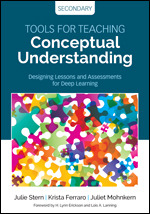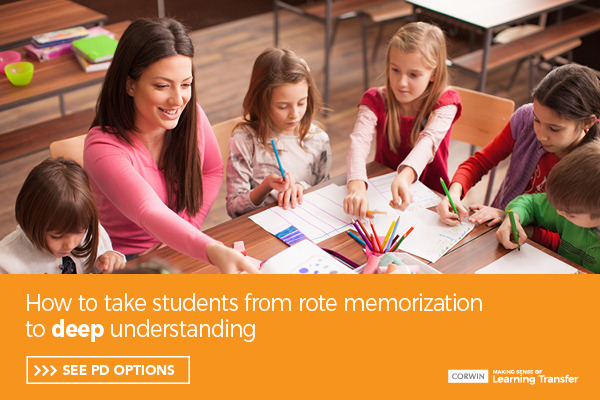Tools for Teaching Conceptual Understanding, Secondary
Designing Lessons and Assessments for Deep Learning
Foreword by H. Lynn Erickson and Lois A. Lanning
Corwin Teaching Essentials
Students become experts and innovators through Concept-Based teaching
Innovators don’t invent without a deep understanding of how the world works. With this foundation, they apply conceptual understanding to solve new problems. We want our students to not only retain ideas, but relate them to other things they encounter, using each new situation to add nuance and sophistication to their thinking. To do this, they need conceptual understanding.
This book serves as a road map for Concept-Based teaching. Discover how to help students uncover conceptual relationships and transfer them to new situations. Specifically, teachers will learn:
- Strategies for introducing conceptual learning to students
- Four lesson frameworks to help students uncover conceptual relationships
- How to assess conceptual understanding, and
- How to differentiate concept-based instruction
Look no further. For deep learning and innovative thinking, this book is the place to start.
"The authors tear down the false dichotomies of traditional vs innovative education and provide a practical toolkit for developing creativity and applying knowledge through Concept-Based learning. Every practitioner needs this book to juxtapose what worked well in the 20th Century with what is essential in the 21st Century and beyond."
Michael McDowell, Superintendent
Ross School District, Ross, CA
"While most good educators recognise the incredible value of teaching conceptually, it is challenging. The authors have created accessible, practical baby steps for every teacher to use."
Dr. Vincent Chan, principal
Fairview International School, Kuala Lumpur, Malaysia
"As the product, and facilitator, of a topic-based, coverage-centered education for some four decades, discovering the value of a concept-based approach to teaching and learning has caused a paradigmatic shift both in my classroom and in my own intellectual journey. Julie Stern´s book builds upon the best of recent educational theory and research to guide teachers on how to transform our students from fact-collectors into conceptual experts as they discover and transfer their understandings of the world around them, and ultimately, seek to solve real-world challenges."
"Tools for Teaching Conceptual Understanding is filled with assessments and ideas for teaching students to think conceptually in the classroom. Teachers can learn tools for developing student thinking and how to continually assess for conceptual understanding as learning happens. I recommend this book for anyone who is looking to develop lessons and assessments to support deep, conceptual thinking in their classroom."


